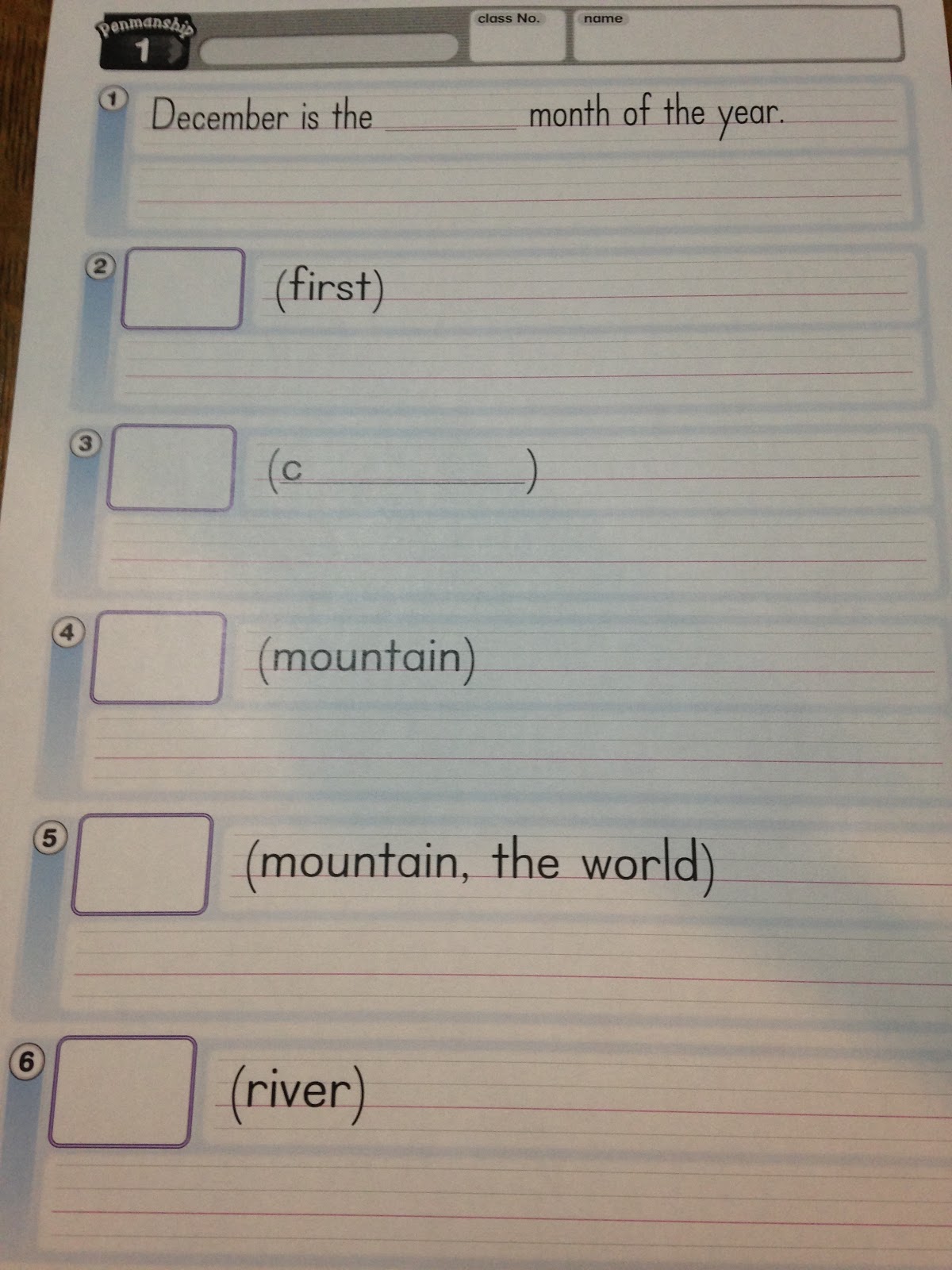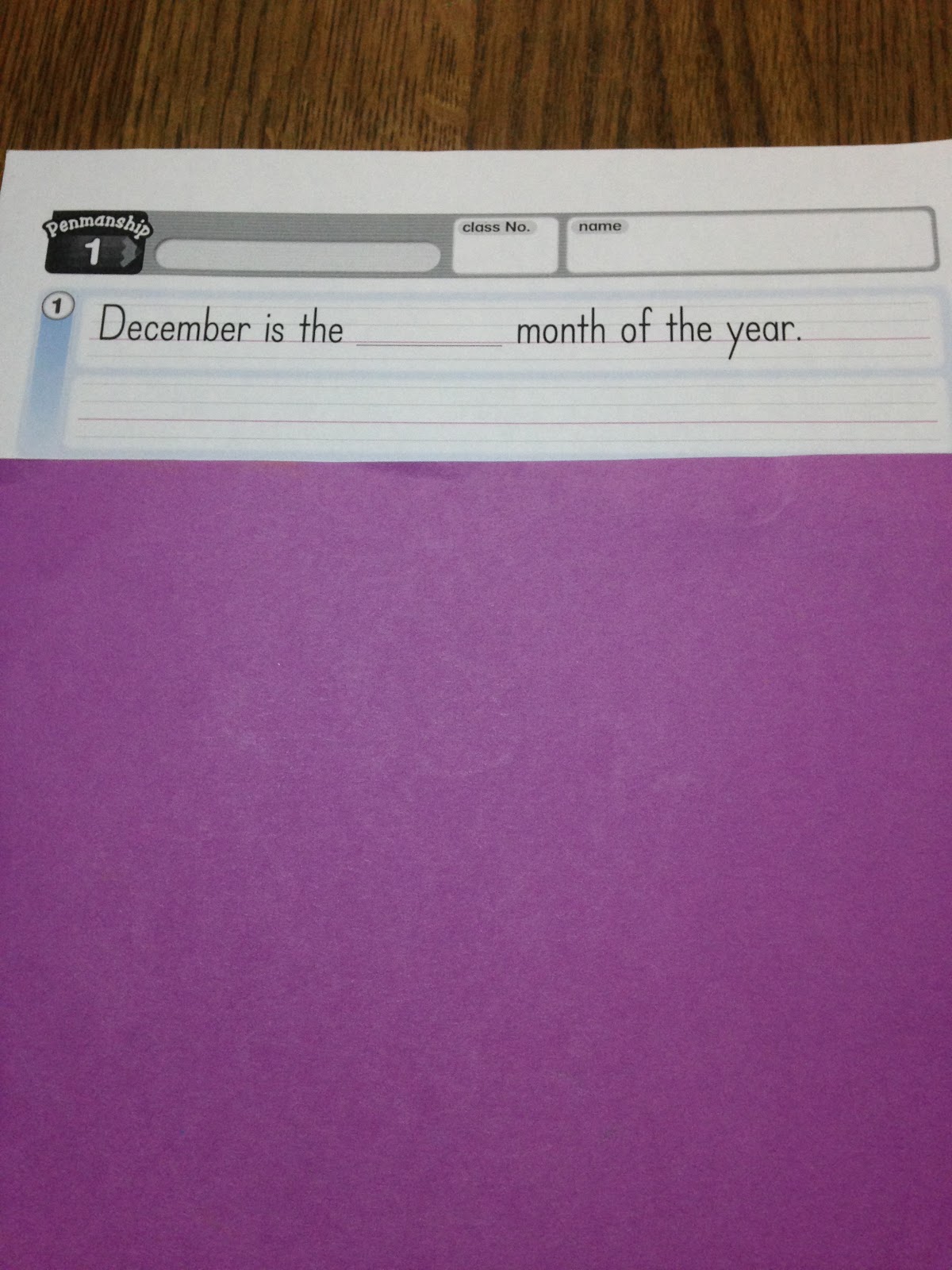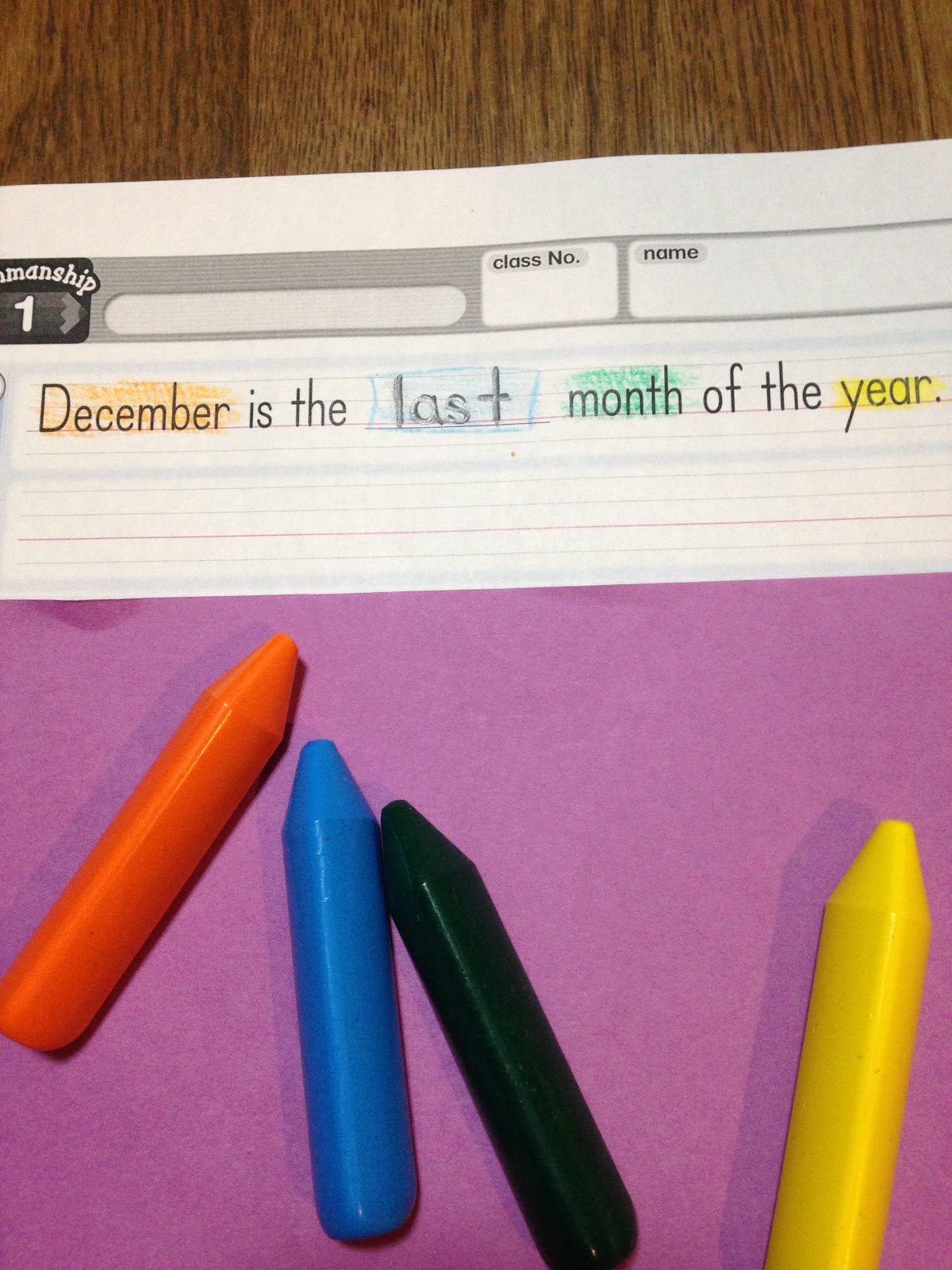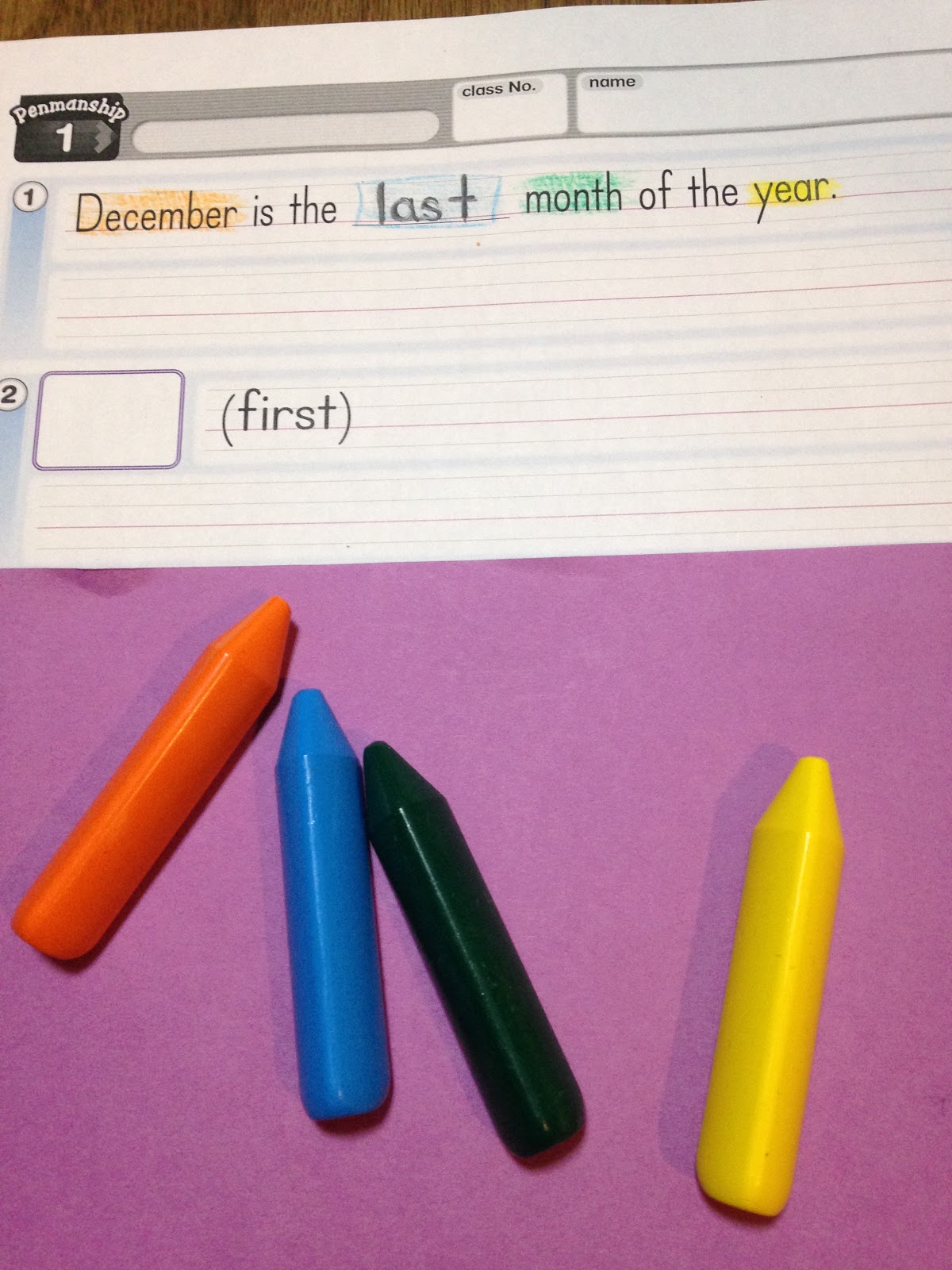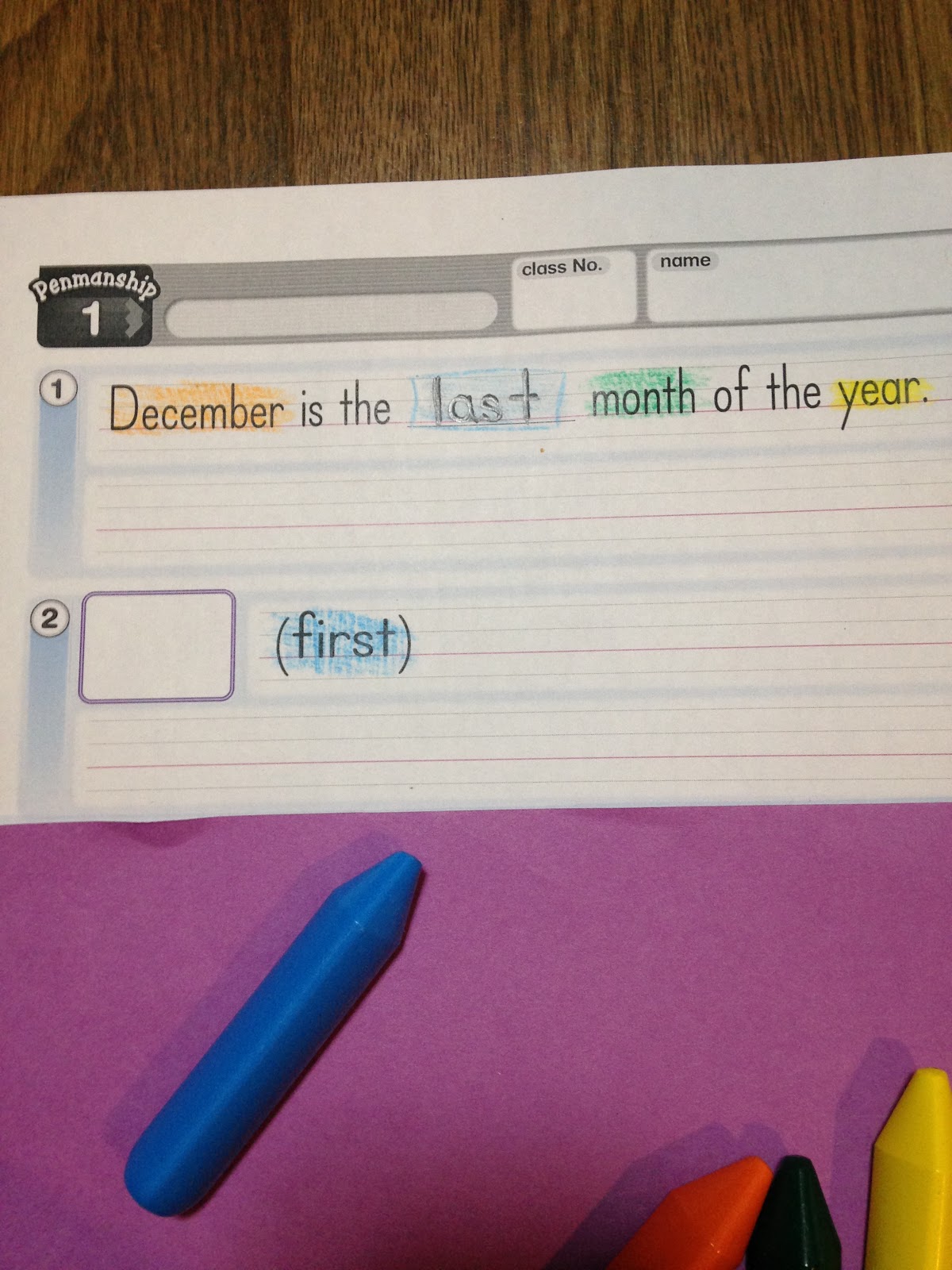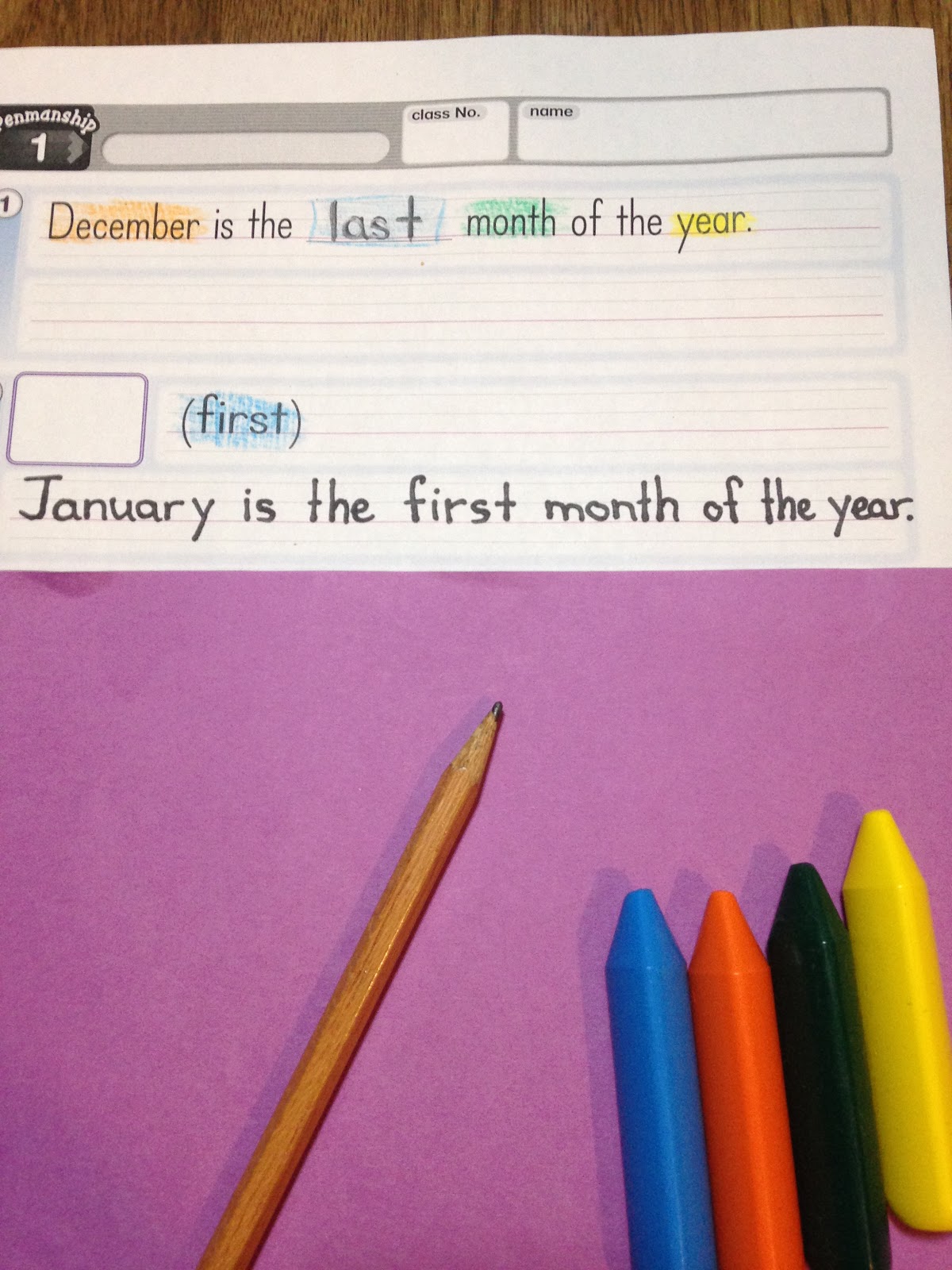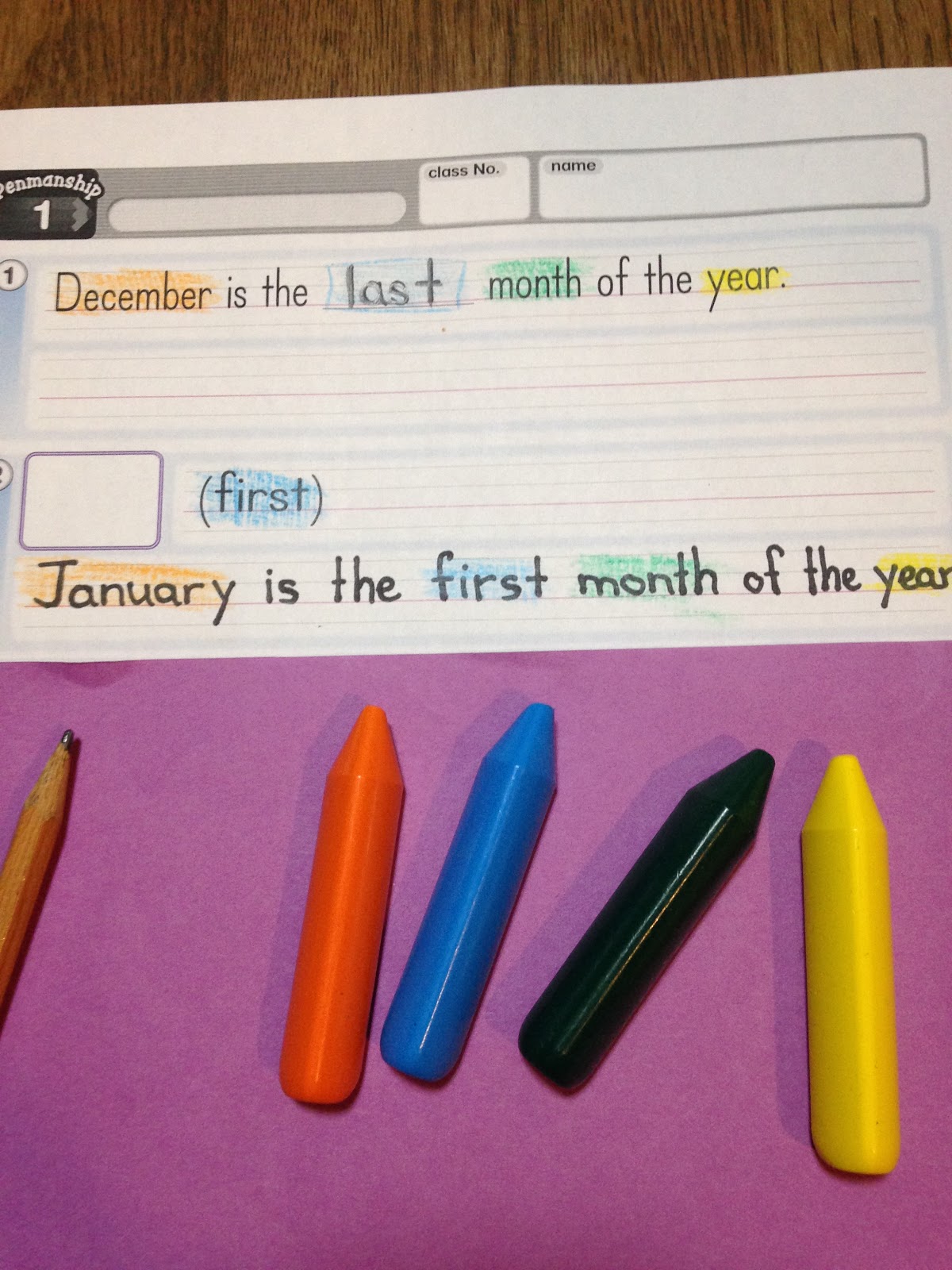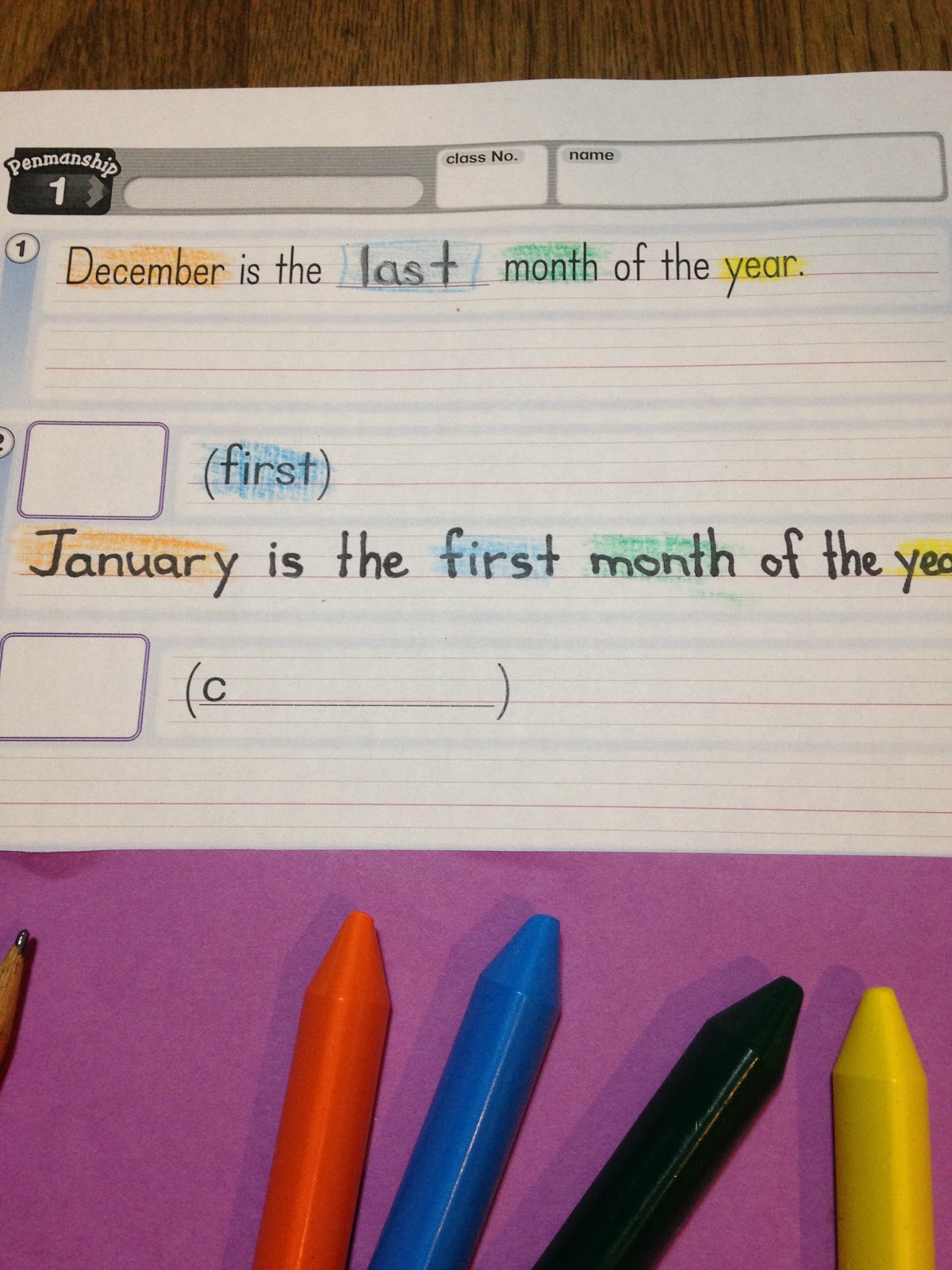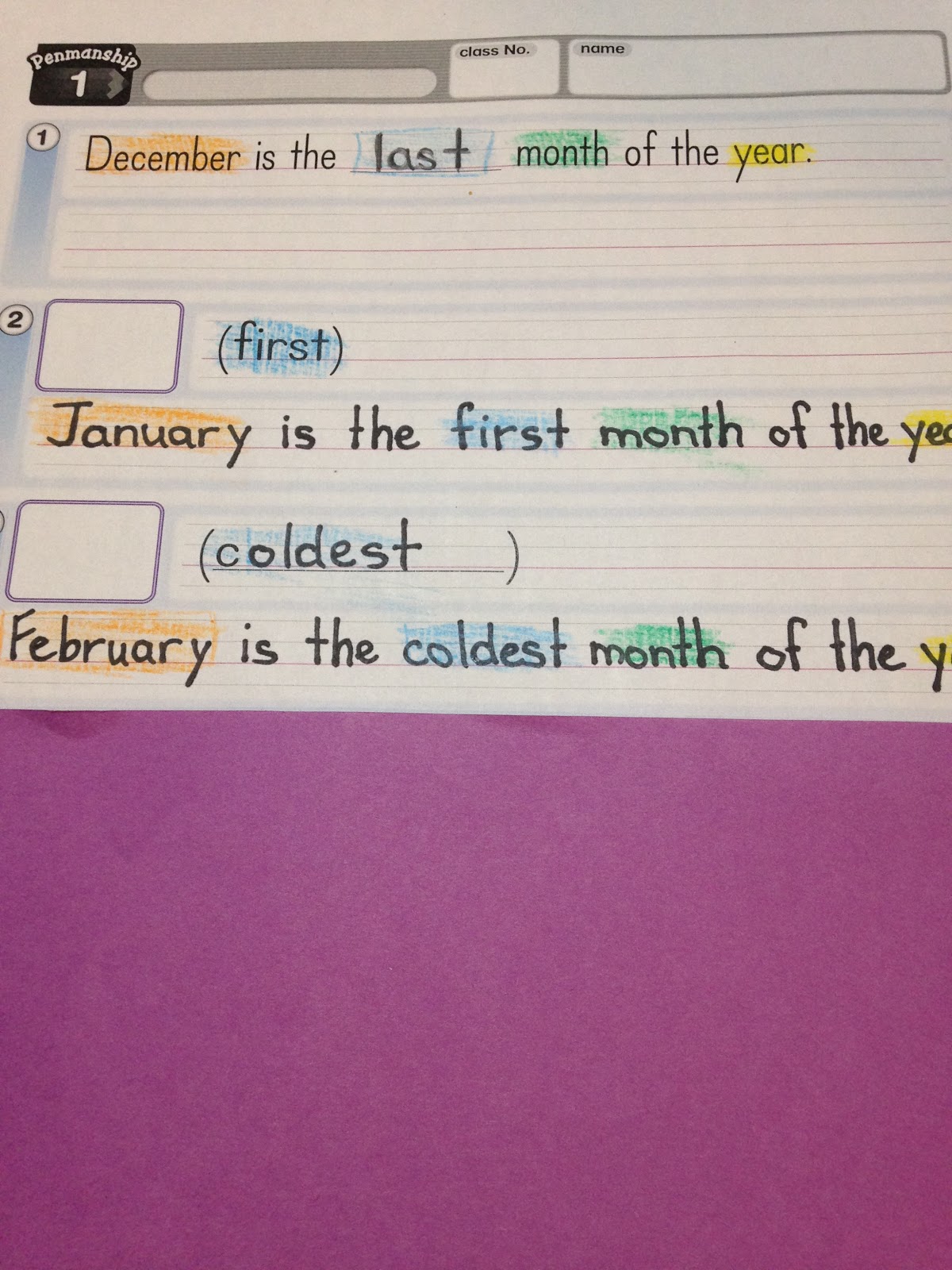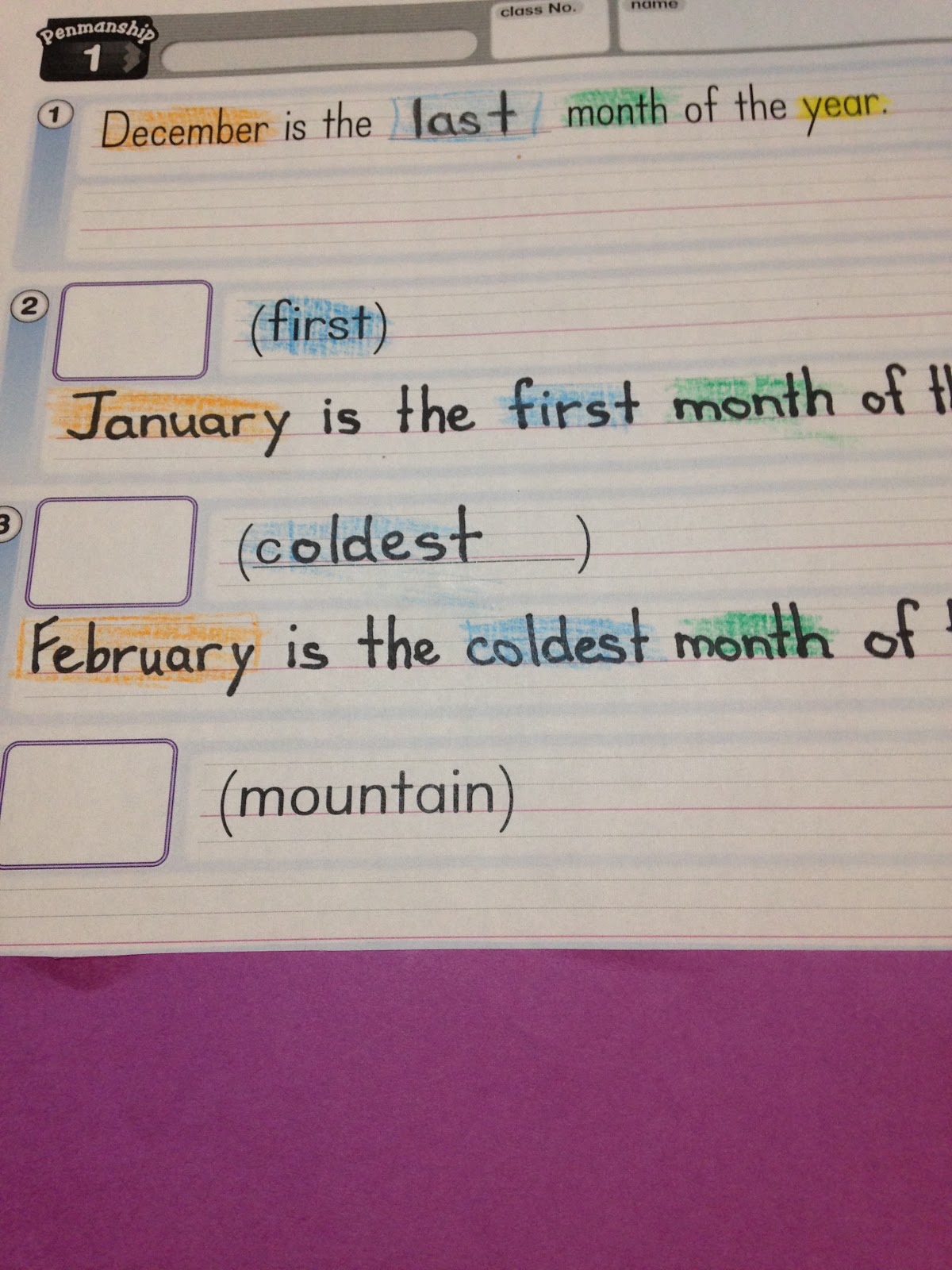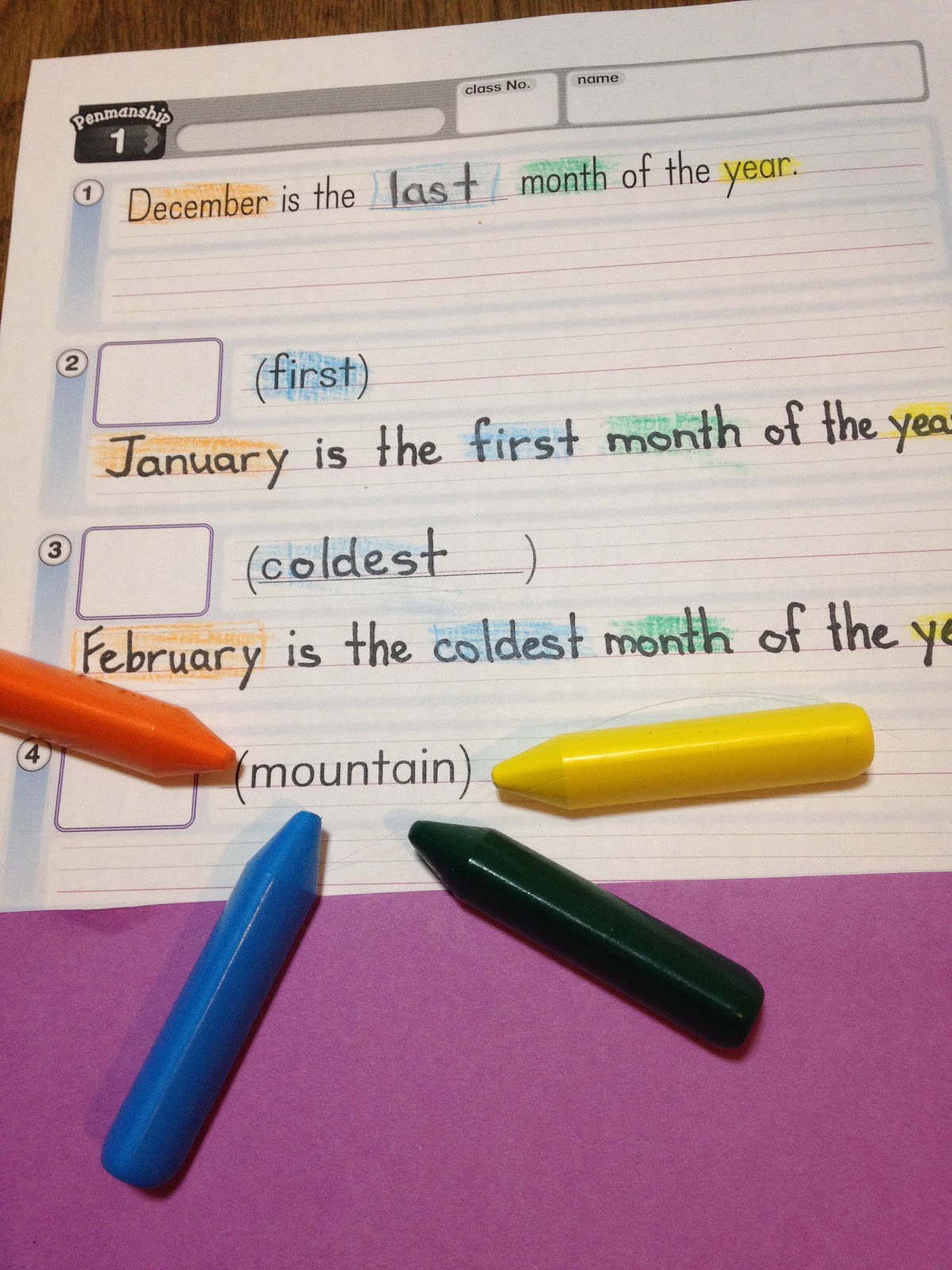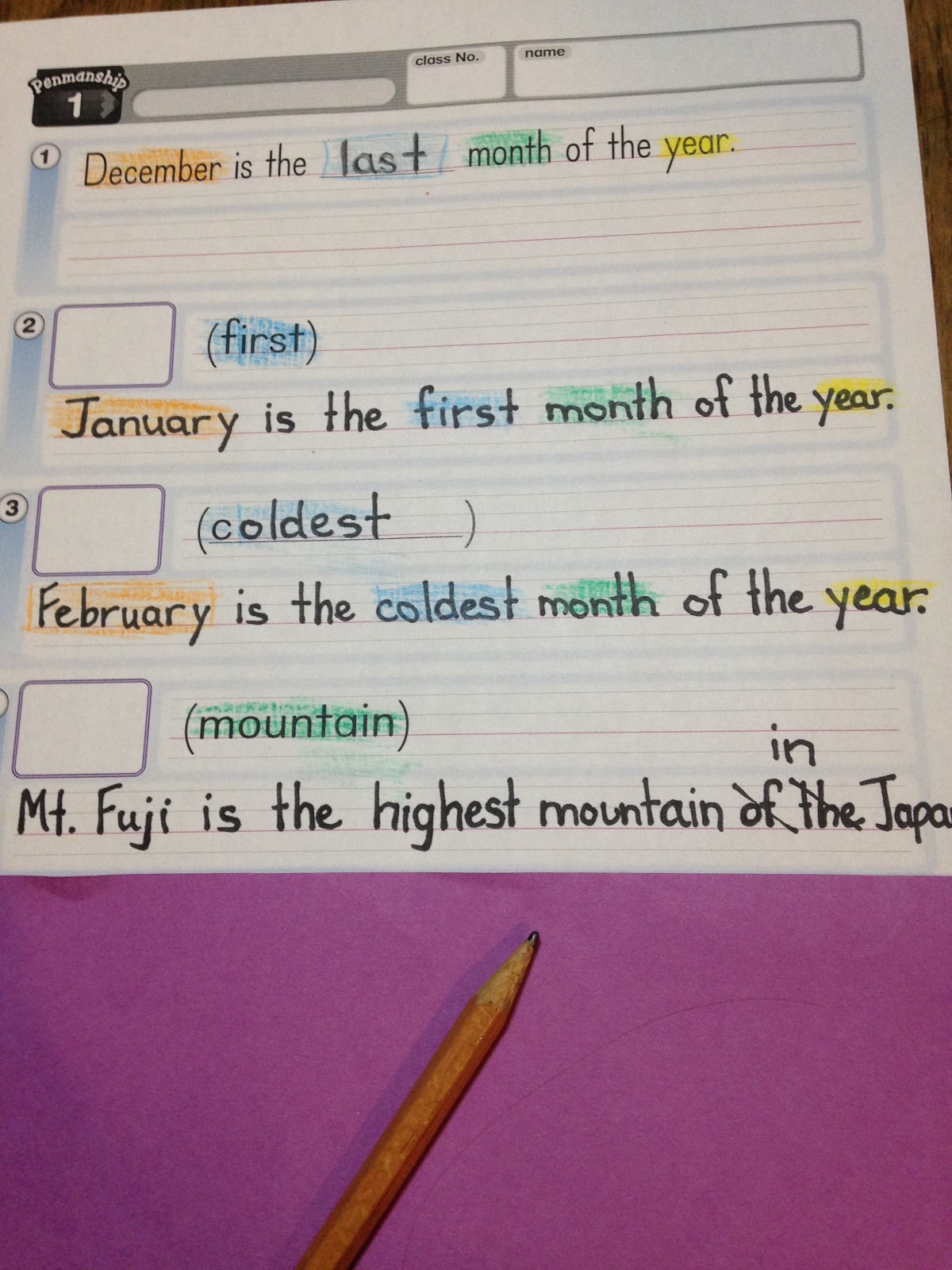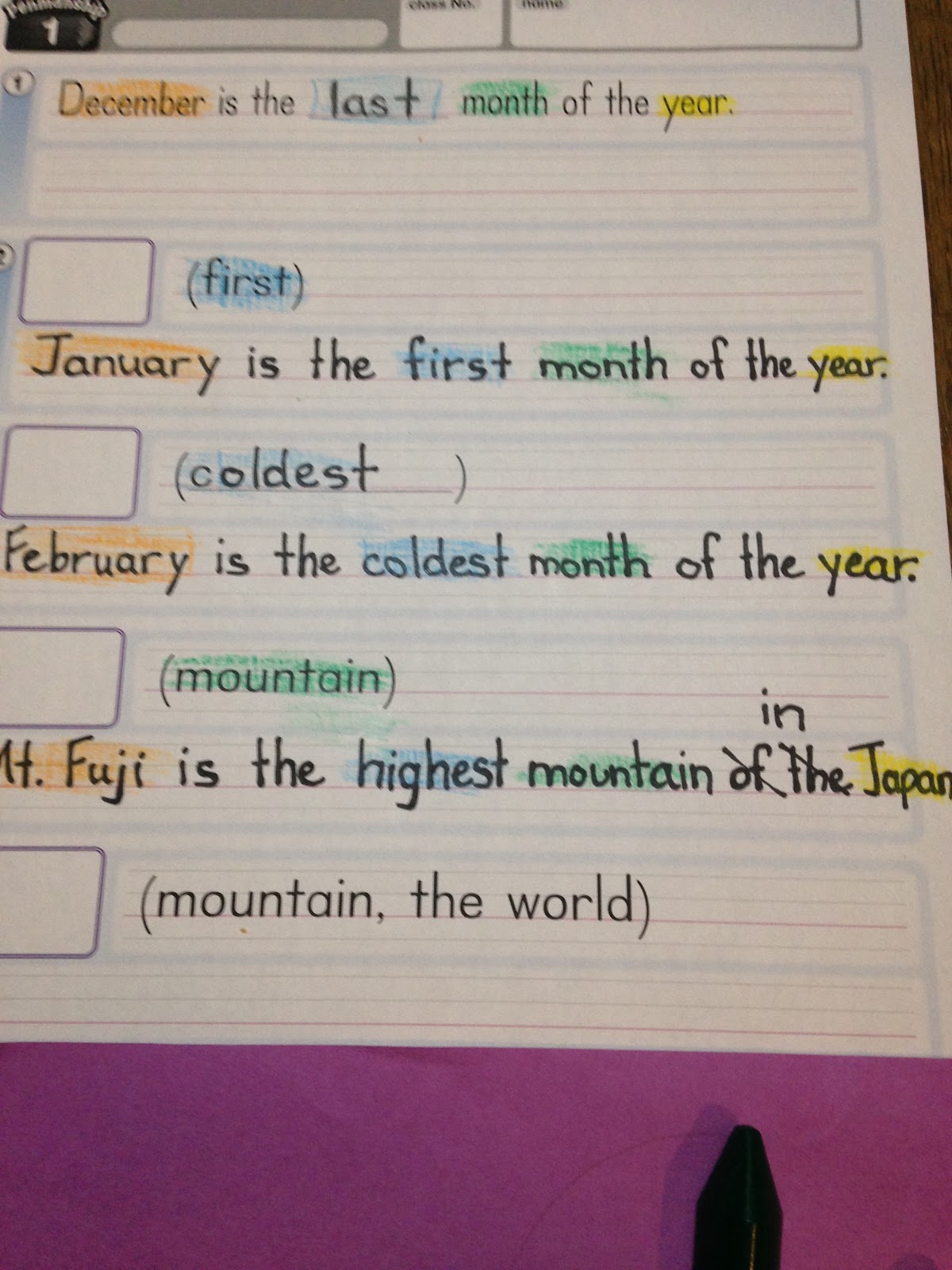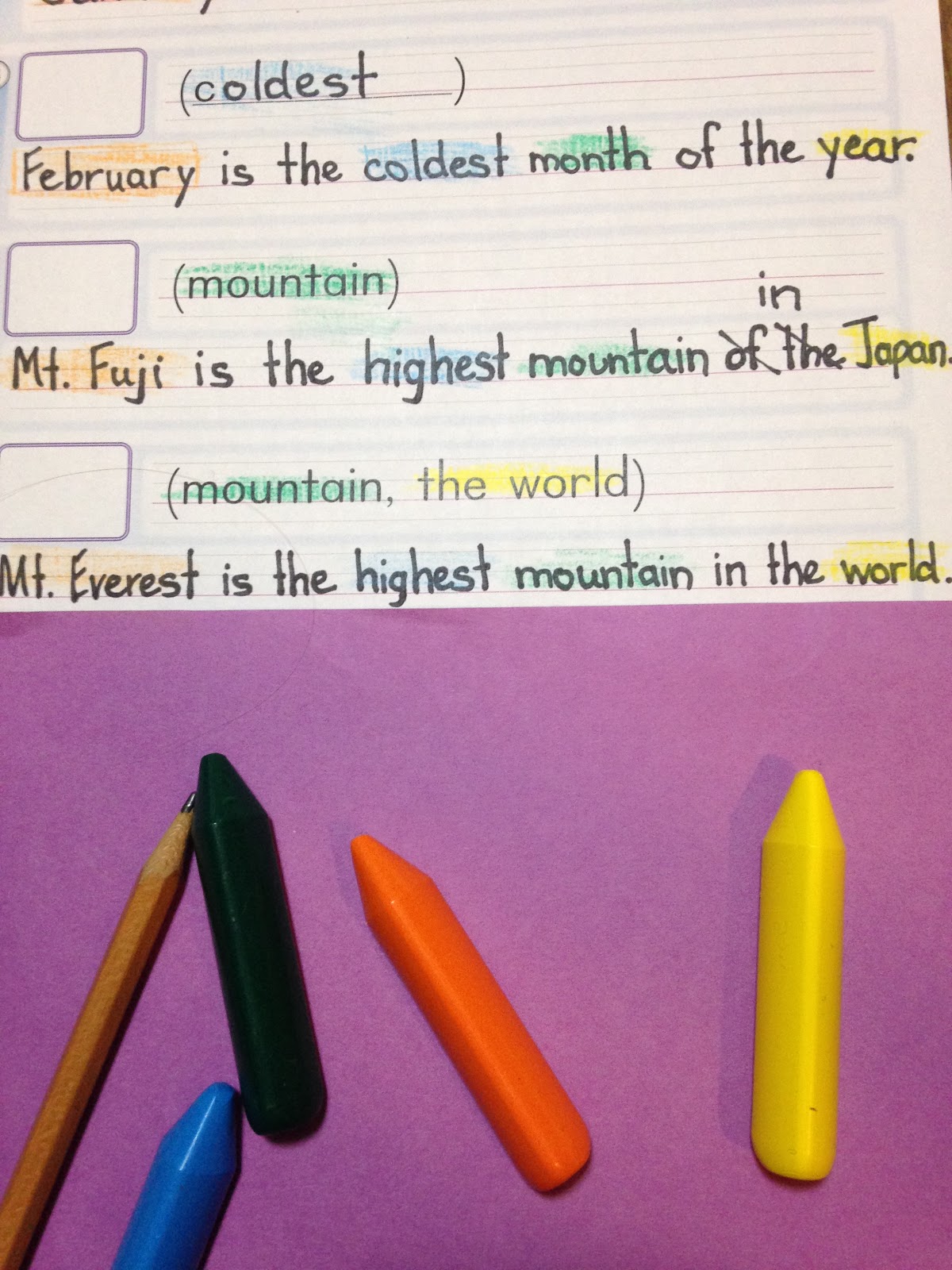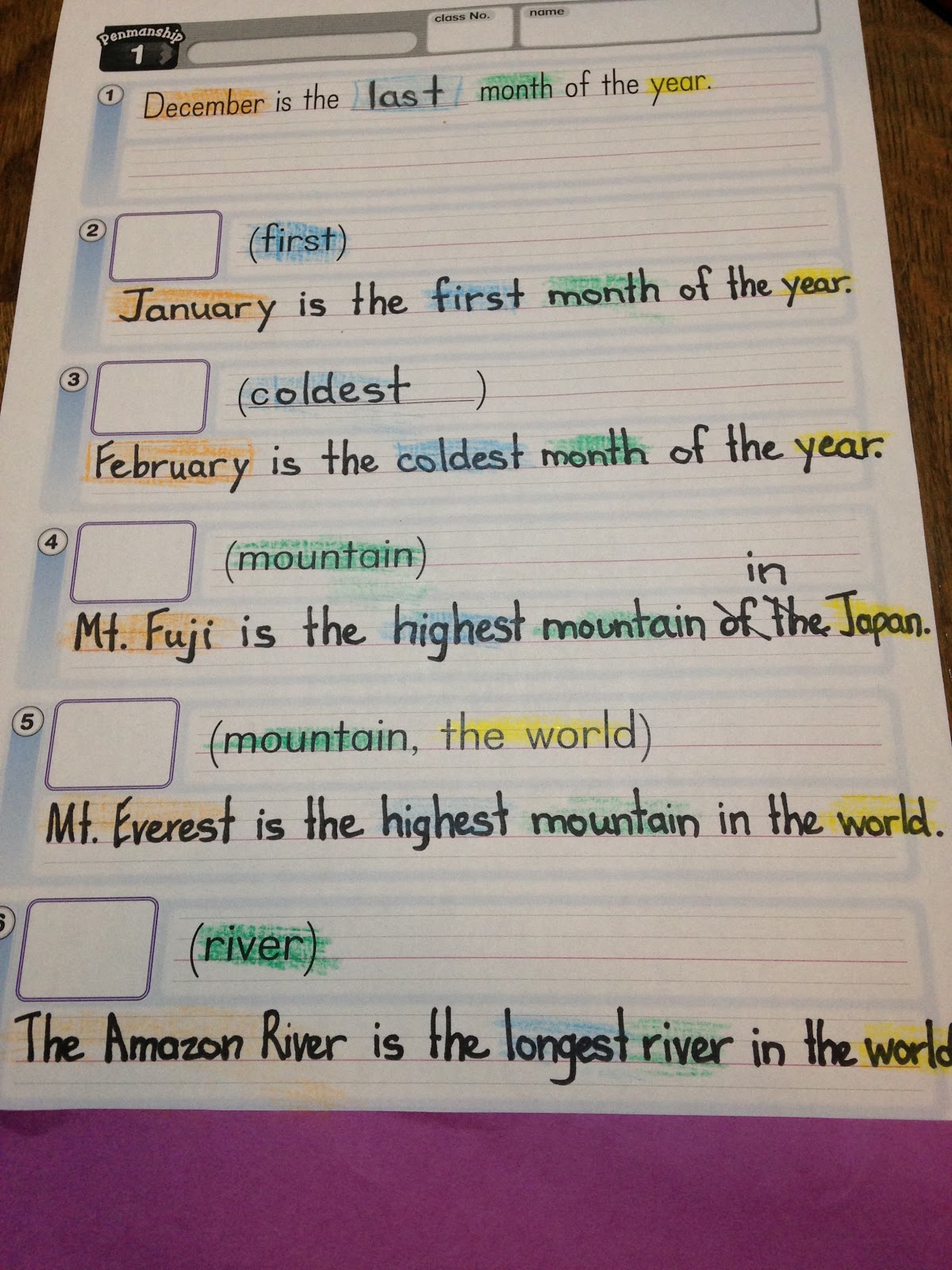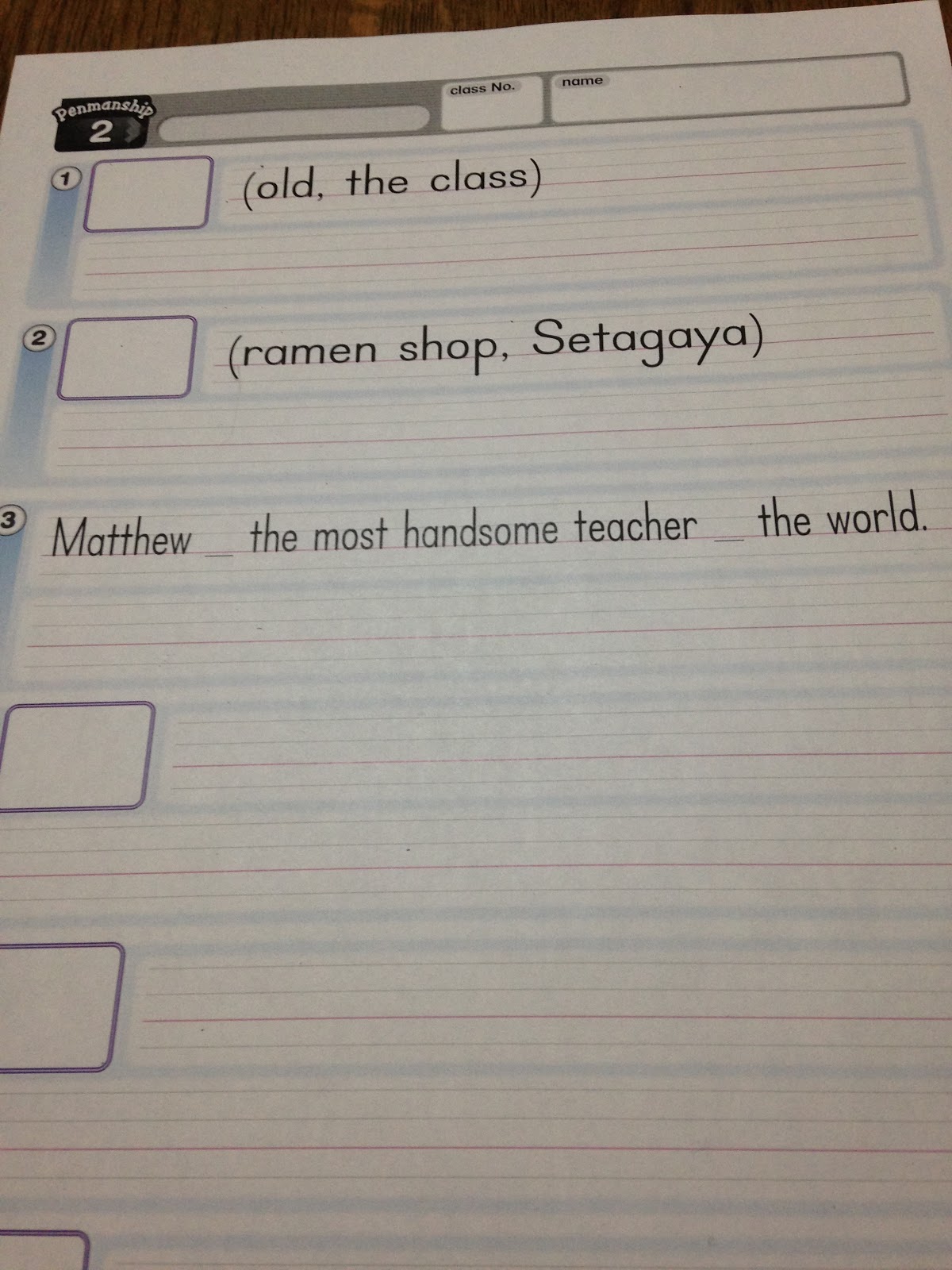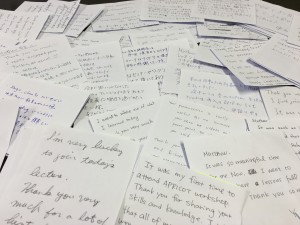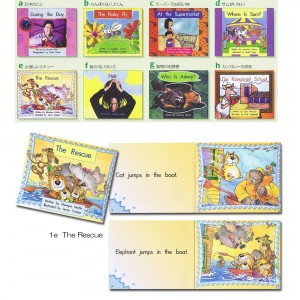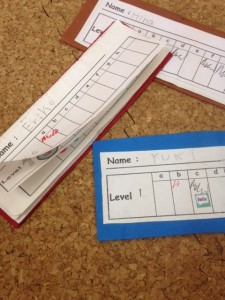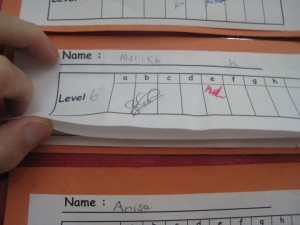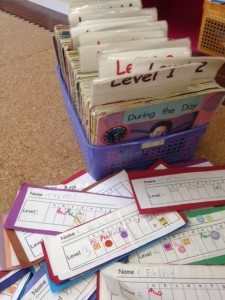

- 54. 10 Useful Pieces of Advice for Teaching with LEARNING WORLD #9 & 10
- 55. “Happy New Year!” “I don’t say that.”
- 53. Halloween 2019
- 52. READY Workbook Pg. 17
- 51. English-Uplift 1-Day Seminars
- 50. READY Workbook - vocabulary copying activity
- 49. 10 Useful Pieces of Advice for Teaching with LEARNING WORLD #8
- 48. 10 Useful Pieces of Advice for Teaching with LEARNING WORLD #7
- 47. 10 Useful Pieces of Advice for Teaching with LEARNING WORLD #6
- 46. 10 Useful Pieces of Advice for Teaching with LEARNING WORLD #5
- 45. 10 Useful Pieces of Advice for Teaching with LEARNING WORLD #4
- 44. 10 Useful Pieces of Advice for Teaching with LEARNING WORLD #3
- Kindergarten aged students
- Lower Elementary-school aged students
- Upper Elementary-school aged students
- Junior High and older students
- Others
14. How to use a worksheet one line…
The new year has well and truly started. I imagine we are all back teaching at page 1 of each of Learning World’s textbooks, right? I hope the Learning World Workshops in March proved valuable to you as you and your students begin the new year!
Here is a very uninteresting-looking worksheet that I created just before the Spring break. It was designed for students on LW Book 3.
Although uninteresting-looking, this worksheet in fact became quite effective for:
- inputting new vocabulary related to adjectives (hot → the hottest, small → the smallest, beautiful → the most beautiful etc.)
- having students create their own sentences based on this vocabulary.
As the worksheet doesn’t appear to make much sense, it’s better to present it to students revealing one line at a time. Use construction paper. Present the top line first:
Encourage students to generate possible answers.
My students initially suggested “Christmas”.
After I reminded them that there are 12 months in the year, they suggested “last”.
Have students write “last”.
Have students color “December”, “last”, “month” and “year” using 4 different colors.
My students chose orange, blue, green and yellow:
Have students reveal the next line:
Have students color this word.
After some discussion, my students agreed that if “last” was blue, then “first” was probably blue too.
Have students read aloud “December is the last month of the year”. Students will soon produce “January is the first month of the year”.
Have them write it:
Have students color this English too.
Have students to reveal the next line:
There is understandable confusion when “c______” is revealed.
Hint to your students that this word is blue.
My students immediately guessed “cold”, and straight away wrote “February is the cold month of the year”.
With the students themselves suggesting “February”, inputting the concept of “coldest” becomes simple.
Now it’s time to apply this concept to other adjectives…
Have students reveal the next line:
“February is the coldest month of the year”, so your students will have understandable confusion about what to do with the word “mountain”.
Ask your students to color it.
A little thought and discussion among themselves will have them agree that the word “mountain” is not comfortable at the start of the sentence, so cannot be orange; nor is it good at the end, so cannot be yellow; nor is it an adjective, so cannot be blue. It can really only be green.
With “mountain” green, your students will soon suggest ”Mt. Fuji” as orange. With “Mt. Fuji” orange, they will soon suggest “Japan” as yellow. Now they need an adjective for blue English. Input “high” if needed, and have students apply “highest”.
Once this English is colored, students can reveal the next line:
With the words “mountain” and “the world” revealed, your students will soon produce “Mt. Everest is the highest mountain in the world”.
The next line reveals the word “river”.
Now, before this point, each answer was largely decided. From here students can exercise more freedom of expression.
My students chose “The Amazon River” as orange English, and as a result the blue English became “longest” and the yellow English became “the world”. However if the students choose “Japan” as the yellow English, then the orange English becomes “Shinanogawa”. Alternatively, a change to the blue English will create different orange and yellow English. Perhaps a quiz with your students can become a good reason to input new adjectives:
“Ayasegawa (Tokyo) is the _______________ river in Japan” (dirtiest)
“Amedakegawa (Hokkaido) is the ____________ river in Japan” (cleanest/ most beautiful)
[⇒Source: http://matome.naver.jp/odai/2134598023082342201]
“Tazawako is the ___________ lake in Japan” (deepest)
[⇒Source: http://www.tabi2ikitai.com/geography/j0102a/a01006.html]
For homework, I gave the following worksheet to my students:
You can imagine how disappointed they were to discover that they weren’t able to choose any of the colored English for #3!! They quickly learned however that the word “not” goes very nicely after the word “is”!
13. Thank you for coming to the Learning World WORKSHOPS!
It was really, really good seeing so many teachers at the recent Learning World Workshops in Osaka, Nagoya and Tokyo.
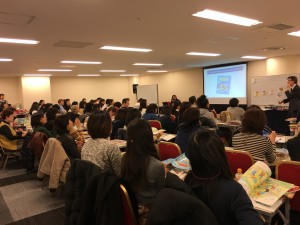 Osaka 2/28
Osaka 2/28
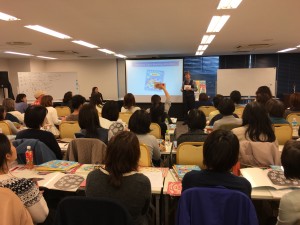 Nagoya 3/6
Nagoya 3/6
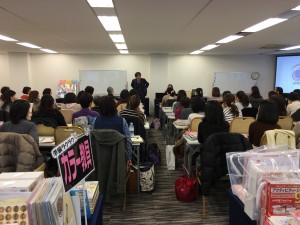 Tokyo 3/13
Tokyo 3/13
As a presenter, it’s exciting to see new faces. I always hope that new teachers can relate to the issues we bring to our Workshops, and can take home perhaps a new angle of looking at their teaching. If it was your first time to attend an APRICOT Workshop, I say thank you for coming, I hope you found it worthwhile, and I hope to see you again!
And as a presenter it’s of course also encouraging to see familiar faces. It tells me that teachers are indeed finding value at our Workshops, and are returning for more. If it was not your first time to attend an APRICOT Workshop, I say thank you for coming again, I hope you’re not tired of me presenting, and I definitely hope to see you again!
Thank you especially if your attendance at one of the Workshops involved a lot of travel. I understand that more than twenty teachers used the bullet train, and a few even arrived by plane! Your commitment of time and money to study reflects your commitment to your students. I think your students should give YOU a sticker!!
This year’s topic was a tough one – but a very important one, and one that has really been in want of discussion. The process of having our students attain the skill of reading can be frustrating for both teachers and students. However, if the teacher has a sound educational policy in place, if the students’ learning environment is stable, and if certain objectives are set and met with appropriate materials, students can find significant success with reading in a reasonable amount of time. My presentation at the Workshops attempted to show this.
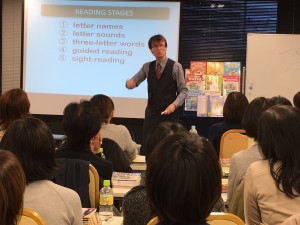
Thank you for your patience with the venue’s cramped conditions.
Thank you for your patience with occasional technical difficulties.
Thank you for your patience with my battle to stay properly time-managed!
Thank you for your written feedback. It means a lot to me, and APRICOT too of course. It lets us know that if we are making a positive difference for you and your students or not. Essentially, that’s what we want the Workshops to do. That’s what the Workshops need to do. Please know that the Learning World Workshops are YOUR workshops. Not one single Workshop will always satisfy everybody’s needs, as everybody’s teaching situations can differ widely. But your input in the form of inquiries to APRICOT is useful and welcome! Your inquiries help APRICOT understand where your concerns are, and these form the basis for Workshops.
If you weren’t able to join this year’s Learning World Workshops, please join us next year! Whether I’m presenting again or not next year, I hope to see everybody there!!
Thank you again!
9. Hiromi Kawahara-sensei’s “Use of Teaching Materials” Seminar
OK, so hands up all those who went to Hiromi Kawahara-sensei’s (Tokyo) Seminar on Sunday? Well, my hands are certainly raised high above my head right now! What a day!!
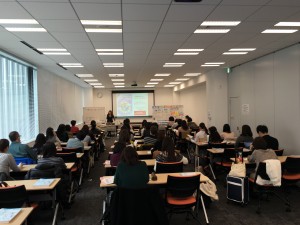
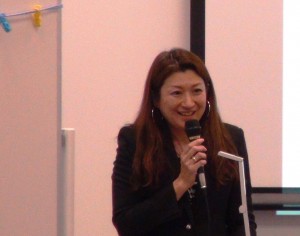
It’s no secret that I’m a big fan of Hiromi Kawahara. She’s one of my “Big Four” most influential teachers (Ron Martin, John Fanselow, Mikiko Nakamoto, Hiromi Kawahara). And on Sunday I felt that she presented the bestest of ALL her best presentations. If you are reading this and you haven’t yet been to any of her workshops, you really should go! And here’s why:
- Her ideas make sense – so they’re easy to understand.
- Everything she says strikes a chord with you, so as she talks you’ll find yourself nodding. Then as you look around, you see so many others in the room involved in the same synchronized nodding movement. She talks about all the things you’ve felt as a teacher but could never quite put your finger on. She describes everything you’ve always wanted to describe about teaching but could never find the words to do so.
- She offers good, very simple classroom ideas – and then expands them further for another few good, very simple classroom ideas. You’re left feeling “Yeah, I think I could do that…” or “I think my students would like that….” or “That’s interesting! What material is that again?”
- She really seems to understand the challenges teachers face, and her advice is practical.
- First appearances are deceiving; she doesn’t fit my “image” of an educator: elderly, soft-spoken with eyes squinted to half-closed during moments of profound depth. She instead rather looks like a fun friend to have a few drinks with. Her deep, deep understanding of children’s English education however, one that she shares a little at a time with you as the presentation progresses, will perhaps surprise you.
- She has total command of all of APRICOT’S materials and readily shares ideas on how to apply them in the classroom.
I chose a couple of scribbles from the notes I made on Sunday to serve as my “best presentation moments”:
- ”For students to produce original ideas and opinions in class, teachers need to present lessons that don’t require merely one answer.” I agree. This thought significantly sets English teachers apart from teachers of other subjects. Until English teachers themselves understand this point, their efforts in the classroom will never produce students capable of worthy English communication.
- ”When teaching with LEARNING WORLD textbooks, in class you open the textbooks last!” This point reminded me of teachers I worked with many years ago who at the start of each lesson would have students open their textbooks at the page where the previous lesson had ended, and resume from there, planning the lesson as they did it. LEARNING WORLD is not a textbook designed for that style of teaching.
I can’t stress enough the value of APRICOT workshops. The insight to be gained there from the experiences of the teachers presenting, as well of course those of the teachers attending, can ultimately make important differences to the experiences of your own students.
Kawahara sensei, Otsukaresama deshita for Sunday! I’m looking forward to seeing you and everyone at next year’s workshops!
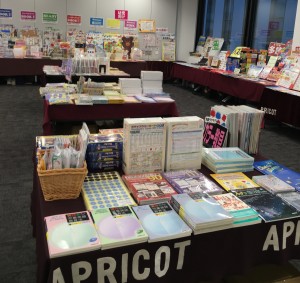
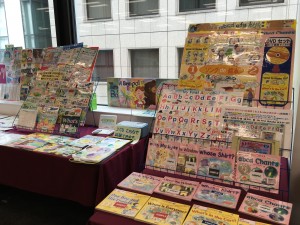
●the next events information ⇒⇒ Click here!
7. APRICOT MATES MEETING 2015
I usually don’t like to put my daughters into Daycare on the weekend, however I do if there is something very valuable for me to attend. For teachers like me who are interested in furthering the development of their teaching, APRICOT MATES Meetings are indeed very valuable.
There were two last week: one in Osaka and one in Tokyo. I ran my girls up to the Daycare, and then jumped on the short train ride to Nihonbashi to attend the Tokyo meeting.
The venue at Nihonbashi was a comfortable and welcome alternative to the usual Kyorin Building in Nakanosakaue. Checking the map at Nihonbashi station brought a moment of nostalgia as I noted that Sakamoto and Tokiwa Elementary Schools (two Chuo-ku schools in which I taught for many years) were nearby.
It was great catching up with quite a few teachers whom I hadn’t seen for a while – but I was also quite surprised at the rather large number of new faces! So good to see!
In total, 38 teachers including me.


Now, the program for the afternoon had Nakamoto-sensei and Kawahara-sensei giving training at the same time in adjacent rooms… This was slightly problematic for me because, while I have a number of extraordinary and amazing talents, splitting myself in two in order to be in two different rooms at once is not among them!
*Sigh*
BOTH Nakamoto-sensei and Kawahara-sensei give excellent and very inspiring presentations!!
Dilemma, dilemma… who do I choose?
I decided to study with Nakamoto-sensei because well, it’s not every day that she comes to Tokyo. (Reports from teachers who attended Kawahara-sensei’s workshop suggest that it was as fantastic – as usual.)
Nakamoto-sensei opened her presentation by confessing that she had recently shocked some teachers at seminars because she had chosen to talk about the business aspect of teaching. Those teachers had apparently expected Nakamoto-sensei to be not interested in money, and were disappointed that this wasn’t the case. As I listened, I wondered if I actually knew anybody who was not interested in money…
In case I am ever in the future criticised for the same reason, let me state here clearly that I am personally very happy with money coming my way, particularly if it’s a lot. And as such, I was very happy that Nakamoto-sensei in her presentation shared with us the business side of her career in English education.
Look, Nakamoto-sensei did not give a training session on “how to make money”. Her training was about “how to improve professionalism” and “how to improve the quality of your school” so that you can sustain it in order to continue making a positive difference in our students’ lives. Her message reminded me of the words of my favorite philosopher Jim Rohn: “Your income is always a direct reflection of your value to society. If you want more income, you must deliver more value to society”. Nakamoto-sensei’s presentation gave lots of principles to do just that.
After the training there was a small party with food and drinks provided. I should have perhaps made more of an effort to meet new faces, but found myself with old faces, picking up conversations exactly where we’d left them at the last APRICOT event.
I was very happy to learn at this meeting that some teachers even read this blog!! This is good to know because it corrects a mistaken assumption of mine that “probably nobody was” (!).If you are reading this, by all means, send me your comments, questions or topics that you want me to discuss here via the APRICOT e-mail address, OK?
By good fortune and a lucky train connection I managed to be at the Daycare perfectly on time to pick up my girls. They’d had a great day – and hadn’t missed me in the slightest.
5. YOUNG READERS
A couple of questions for you regarding the development of students’ reading ability:
・What’s your strategy for improving your students’ reading?
・At what point do you engage your students in a reading activity for the very first time?
・What’s the nature of this activity?
・Do you bring reading activities to your classes on a regular basis?
・How much time do you spend on reading activities each lesson?
・What’s the nature of these activities?
As a general rule, I try to conduct reading activities in all classes – regardless of age – once the students have shown me an understanding of what I believe are the basic fundamentals of verbal communication in English:
- Students are able to focus their eyes and ears on the teacher in the course of interaction
- Students are able to know when a response is required in the course of interaction
In other words, I don’t want to start students’ reading development if they are as yet unable to participate in face to face communication. When the above conditions are met, I feel comfortable with bringing students’ attention down to a page and to the written script of the English language.
PHONICS
Firstly, I familiarize students who have no reading experience with the sounds of the alphabet using APRICOT’S Click-on-Phonics flashcards.
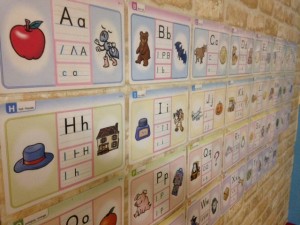
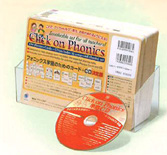
Sounds are then put together into three-letter-words, again using the flashcards from Click-on-Phonics. Throughout this process, I regularly read storybooks to them, with the aim of delivering the message that letters put together in words actually carry meaning.
FROM PHONICS EXERCISES TO ACTUAL BOOKS
Usually by the time students can read Click-on-Phonics’ 3-letter-words, they’ve attended my classes long enough to be familiar with most of the vocabulary found in each book of Level 1 of the SPRINGBOARD series of books.
So, in all classes longer than 50 minutes (I teach 50 minute, 80 minute & 180 minute lessons) I have implemented a formal reading program using SPRINGBOARD.
ABOUT SPRINGBOARD series
- There are 16 levels with Level 1 being the easiest.
- The challenge level increases with each level.
- There are 8 books in each level.
- The challenge level is the same in each book within a level.
- Each book in the early levels has 8 pages, with 1 ~ 3 simple sentences on each.
HOW MY READING PROGRAM WORKS
- All students receive a personal “Reading Card”.
With it students know what level they are currently on and which books they have read within that level.
- All students start at Level 1. Even those new students to the class who perhaps have had experience with English at another school start at Level 1. Put simply, everyone starts at Level 1.
- Students read every book within each level. My signature on their Reading Card lets students know which books they have completed. After they have read each book in the level, they receive a new paper for their Reading Card and progress to the next level.
- Between 20 ~ 30 minutes is spent each lesson on the program.
- Occasionally at the end of the session there is a Sticker Challenge. Students can get a sticker on their Reading Card if they choose to read a book to the whole class. The book they select must be one that I have signed on their Card.
IN CLASS
1. Each student gets their Reading Card, then students select a book from the SPRINGBOARD collection within their current level.
2. They begin individually reading. If they come across a word that they cannot read, they ask a classmate for help:
“What does this say?” “What’s this?” or “Help me, please”.
If no classmate can help, students ask me. I am in the meantime observing and offering help and support.
3. When a student feels comfortable that they can read their current book, they come to me:
“Matthew, I’m ready”.
We sit together and the student reads his/her book to me. Through questioning and
other interaction I check the student’s comprehension of the text throughout the reading
or at the end of the reading.
4. I give an evaluation on the student’s reading. If I’m satisfied that they were able to read
every word, I sign my name on their reading card and they move onto another book in
their level. If the student struggled somewhat during the reading, I’ll sign “half” my name
on their card, give help on the problem areas and have the student spend more time on
that book. To confirm the student’s ability to read each word, I may randomly write words
from the book on the whiteboard for the students to read to me.
Here’s a short video of the program in action in class. The students have only recently begun the program and so are on Levels 1 and 2. The girl reading to me is 7 years old.
■VIDEO :”SPRINGBOARD” ーHow it works in class
The girl reading in this video is 9 years old. She has nearly 3 years of English experience. She began the SPRINGBOARD Program 2 years ago. She is on Level 5.
■VIDEO: SPRINGBOARD “LEVEL 5”
I like the SPRINGBOARD Series because:
- it’s well structured.
- the text and pictures are not on the same page.
- students like the stories.
- students feel success reading the stories.
Read on!












